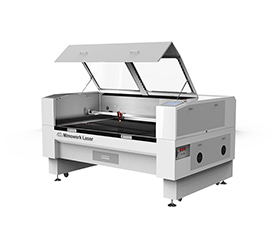A Case Sharing of Laser Cutting Wood
Case Sharing
Laser Cutting Wood Without Charring
Using laser cutting for wood offers advantages such as high precision, narrow kerf, fast speed, and smooth cutting surfaces. However, due to the concentrated energy of the laser, the wood tends to melt during the cutting process, resulting in a phenomenon known as charring where the edges of the cut become carbonized. Today, I will discuss how to minimize or even avoid this issue.

Key points:
✔ Ensure complete cutting in a single pass
✔ Use high speed and low power
✔ Employ air blowing with the assistance of an air compressor
How to avoid burning when laser cutting wood?
• Wood Thickness – 5mm maybe a watershed
Firstly, it’s important to note that achieving no charring is difficult when cutting thicker wood boards. Based on my tests and observations, cutting materials below 5mm thickness can generally be done with minimal charring. For materials above 5mm, the results may vary. Let’s dive into the details of how to minimize charring when laser cutting wood:
• One Pass Cutting will be Better
It is commonly understood that to avoid charring, one should use high speed and low power. While this is partially true, there is a common misconception. Some people believe that faster speed and lower power, along with multiple passes, can reduce charring. However, this approach can actually lead to increased charring effects compared to a single pass at optimal settings.

To achieve optimal results and minimize charring, it is important to ensure that the wood is cut through in a single pass while maintaining low power and high speed. In this case, a faster speed and lower power are preferred as long as the wood can be fully cut through. However, if multiple passes are required to cut through the material, it can actually lead to increased charring. This is because the areas that have already been cut through will be subjected to secondary burning, resulting in more pronounced charring with each subsequent pass.
During the second pass, the parts that were already cut through are subjected to burning again, while the areas that were not fully cut through in the first pass may appear less charred. Therefore, it is crucial to ensure that the cutting is achieved in a single pass and avoid secondary damage.
• Balance between Cutting Speed and Power
It is important to note that there is a trade-off between speed and power. Faster speeds make it more difficult to cut through, while lower power may also hinder the cutting process. It is necessary to prioritize between these two factors. Based on my experience, faster speed is more important than lower power. Using a higher power, try to find the fastest speed that still allows for complete cutting. However, determining the optimal values may require testing.
Case Sharing – how to set parameters when laser cutting wood
2mm Plywood
For cutting 2mm plywood, I used 40% power and a speed of 45mm/s.
We also tested the machine’s maximum cutting thickness, which was an 18mm solid wood. I used the maximum power setting, but the cutting speed was significantly slower.
Chat with us today!
Video Display | How to Laser Cut 11mm Plywood

Wood Laser Cutter & Engraver 1390
Wood Laser Cutter & Engraver 1390

